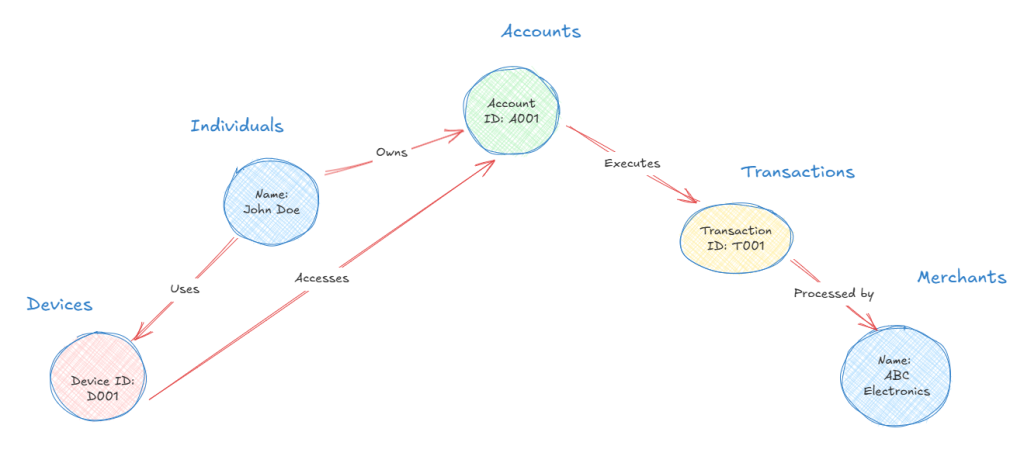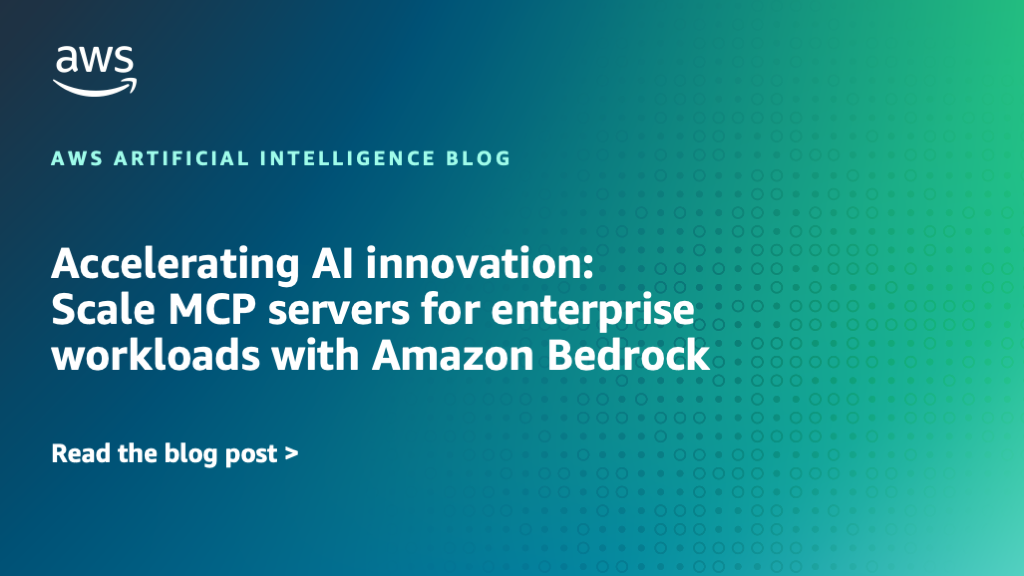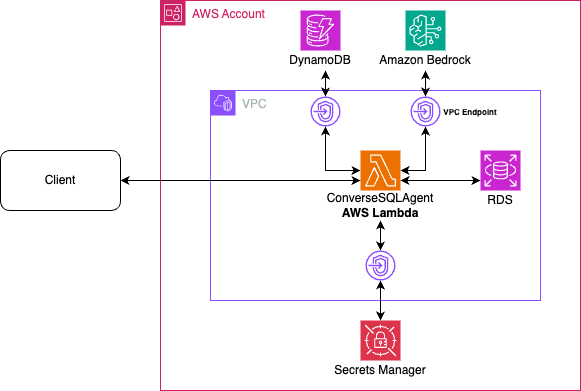Artificial Intelligence
Category: Database
Combat financial fraud with GraphRAG on Amazon Bedrock Knowledge Bases
In this post, we show how to use Amazon Bedrock Knowledge Bases GraphRAG with Amazon Neptune Analytics to build a financial fraud detection solution.
Accelerating AI innovation: Scale MCP servers for enterprise workloads with Amazon Bedrock
In this post, we present a centralized Model Context Protocol (MCP) server implementation using Amazon Bedrock that provides shared access to tools and resources for enterprise AI workloads. The solution enables organizations to accelerate AI innovation by standardizing access to resources and tools through MCP, while maintaining security and governance through a centralized approach.
Building a custom text-to-SQL agent using Amazon Bedrock and Converse API
Developing robust text-to-SQL capabilities is a critical challenge in the field of natural language processing (NLP) and database management. The complexity of NLP and database management increases in this field, particularly while dealing with complex queries and database structures. In this post, we introduce a straightforward but powerful solution with accompanying code to text-to-SQL using a custom agent implementation along with Amazon Bedrock and Converse API.
Build conversational interfaces for structured data using Amazon Bedrock Knowledge Bases
This post provides instructions to configure a structured data retrieval solution, with practical code examples and templates. It covers implementation samples and additional considerations, empowering you to quickly build and scale your conversational data interfaces.
Build GraphRAG applications using Amazon Bedrock Knowledge Bases
In this post, we explore how to use Graph-based Retrieval-Augmented Generation (GraphRAG) in Amazon Bedrock Knowledge Bases to build intelligent applications. Unlike traditional vector search, which retrieves documents based on similarity scores, knowledge graphs encode relationships between entities, allowing large language models (LLMs) to retrieve information with context-aware reasoning.
A generative AI prototype with Amazon Bedrock transforms life sciences and the genome analysis process
This post explores deploying a text-to-SQL pipeline using generative AI models and Amazon Bedrock to ask natural language questions to a genomics database. We demonstrate how to implement an AI assistant web interface with AWS Amplify and explain the prompt engineering strategies adopted to generate the SQL queries. Finally, we present instructions to deploy the service in your own AWS account.
Announcing general availability of Amazon Bedrock Knowledge Bases GraphRAG with Amazon Neptune Analytics
Today, Amazon Web Services (AWS) announced the general availability of Amazon Bedrock Knowledge Bases GraphRAG (GraphRAG), a capability in Amazon Bedrock Knowledge Bases that enhances Retrieval-Augmented Generation (RAG) with graph data in Amazon Neptune Analytics. In this post, we discuss the benefits of GraphRAG and how to get started with it in Amazon Bedrock Knowledge Bases.
How Pattern PXM’s Content Brief is driving conversion on ecommerce marketplaces using AI
Pattern is a leader in ecommerce acceleration, helping brands navigate the complexities of selling on marketplaces and achieve profitable growth through a combination of proprietary technology and on-demand expertise. In this post, we share how Pattern uses AWS services to process trillions of data points to deliver actionable insights, optimizing product listings across multiple services.
Turbocharging premium audit capabilities with the power of generative AI: Verisk’s journey toward a sophisticated conversational chat platform to enhance customer support
Verisk’s Premium Audit Advisory Service is the leading source of technical information and training for premium auditors and underwriters. In this post, we describe the development of the customer support process in PAAS, incorporating generative AI, the data, the architecture, and the evaluation of the results. Conversational AI assistants are rapidly transforming customer and employee support.
Use language embeddings for zero-shot classification and semantic search with Amazon Bedrock
In this post, we explore what language embeddings are and how they can be used to enhance your application. We show how, by using the properties of embeddings, we can implement a real-time zero-shot classifier and can add powerful features such as semantic search.









